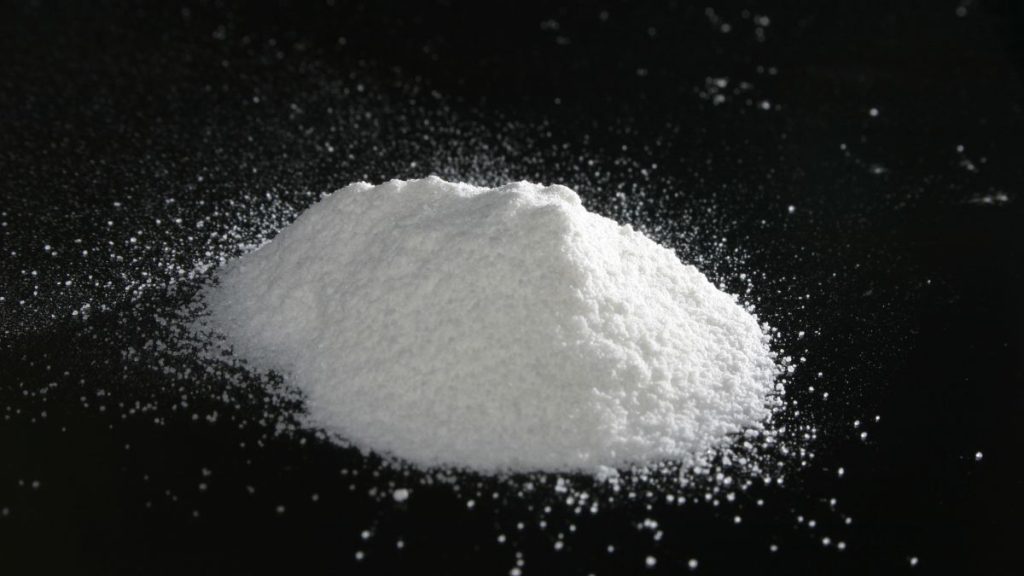Anionic and cationic polymer are two essential types of flocculants used in water and wastewater treatment to promote solid–liquid separation. Both polymers are synthetic, high-molecular-weight compounds that improve clarification, sedimentation, and sludge dewatering efficiency.
Selecting the appropriate polymer depends on the nature and charge of the suspended solids in the water.
What is an Anionic Polymer?
Anionic polymers are long-chain molecules containing negatively charged functional groups. These polymers are primarily used to treat water containing positively charged particles such as metal oxides, clay, or other inorganic matter. Through electrostatic attraction, anionic polymers bind to these particles, forming larger aggregates (flocs) that can be easily settled or filtered.
They are generally produced by copolymerizing acrylamide with negatively charged monomers like acrylic acid. Anionic polymers are available in several forms, powder, emulsion, or liquid, depending on process requirements.
Applications:
- Raw water clarification for industrial feedwater systems.
- Wastewater treatment to enhance thickening and dewatering.
- Mining and mineral processing to separate solids from process water.
- Paper and pulp manufacturing to improve fiber retention and drainage.
Advantages:
- Strengthen floc formation and settling rate.
- Reduce the need for inorganic coagulants.
- Increase filtration and dewatering efficiency.
- Safe and effective when properly applied.
What is a Cationic Polymer?
Cationic polymers contain positively charged functional groups that attract and neutralize negatively charged particles, such as organic matter and microorganisms commonly found in industrial and municipal wastewater. These polymers are typically produced from acrylamide copolymers with cationic monomers such as DMAEA or DMAEM.
Cationic polymers are especially useful for conditioning sludge before mechanical dewatering, as they help increase cake dryness and reduce water content.
Applications:
- Sludge dewatering using centrifuges, filter presses, or belt presses.
- Wastewater clarification to improve turbidity and suspended solids removal.
- Paper industry as retention aids and dry-strength additives.
- Food and textile industries for organic wastewater treatment.
Advantages:
- Improve dewatering performance and reduce sludge volume.
- Enhance clarification and settling speed.
- Minimize total chemical consumption.
- Improve overall effluent quality.
Read Also: Sludge Dewatering: Optimizing Efficiency and Environmental Compliance
Comparison Between Anionic and Cationic Polymers
Although both polymers serve similar purposes in solid–liquid separation, their mechanisms and applications differ significantly.
| Aspect | Anionic Polymer | Cationic Polymer |
| Charge Type | Negative | Positive |
| Targets | Positively charged particles | Negatively charged particles |
| Main Use | Raw water, sedimentation, mining | Sludge conditioning, wastewater |
| Typical pH Range | Neutral to alkaline | Acidic to neutral |
| Floc Type | Lighter and larger | Denser and compact |
| Interaction | Bridges between cationic materials | Neutralizes anionic surfaces |
In summary, anionic polymers are suited for removing inorganic or positively charged solids, while cationic polymers work best for organic or negatively charged materials. Using the wrong polymer type can result in poor floc formation and reduced process efficiency, making charge compatibility testing an essential step in treatment design.
How to Select the Right Polymer
Choosing between anionic and cationic polymers depends on the charge characteristics of the water or sludge being treated. The following steps can help determine the most suitable option:
- Characterize the water or sludge – Analyze parameters such as zeta potential, pH, and turbidity to determine the dominant charge.
- Define process goals – Identify whether the target is clarification, thickening, or dewatering.
- Conduct jar testing – Evaluate floc size, settling rate, and clarity to optimize polymer type and dosage.
- Combine with coagulants if necessary – Coagulants like PAC or alum can improve charge neutralization before polymer addition.
- Monitor system performance – Regularly assess sludge dryness and water quality to maintain consistency.
Proper selection and optimization ensure cost efficiency, improved system stability, and reduced chemical usage.
Read Also: Defoamers in Water Treatment: Essential Role in Industrial Processes
Environmental and Operational Benefits
Anionic and cationic polymers contribute to sustainable water management by minimizing sludge generation, reducing heavy metal discharge, and lowering overall chemical consumption. Compared to traditional inorganic coagulants, polymers generate less sludge and offer superior water recovery, helping industries reduce operational costs and environmental impact.
Their flexibility also allows precise dosing and targeted performance, making them suitable for various industrial sectors—from manufacturing and pulp and paper to food, beverage, and municipal utilities.
Lautan Air Indonesia’s Polymer Expertise
With more than 40 years of experience in water treatment, Lautan Air Indonesia delivers comprehensive polymer and chemical treatment solutions designed to meet diverse industrial or municipal needs. Our expertise ensures customers receive not only high-quality products but also the technical support required for optimal performance.
Our Services Include:
- Customized polymer selection based on water characteristics and treatment objectives.
- Coagulant and flocculant optimization for improved process efficiency.
- On-site technical consultation and testing to determine the right polymer type and dosage.
- Integrated treatment systems covering raw water, process water, and wastewater management.
By partnering with Lautan Air Indonesia, industries gain reliable chemical performance, process efficiency, and environmental compliance—all supported by a trusted local expert.
Contact Lautan Air Indonesia to learn how our polymer technologies can optimize your water treatment operations and reduce overall treatment costs.



